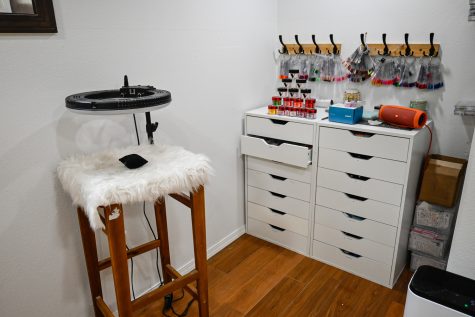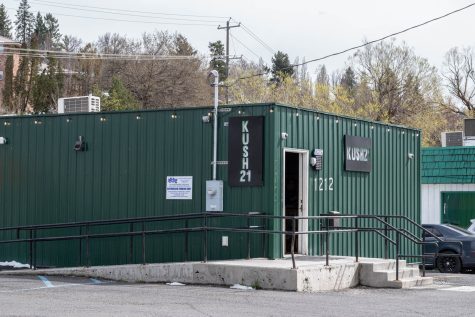Auditioning for success
September 17, 2013
When auditions roll around for a new show at the Regional Theatre of the Palouse (RTOP), aspiring and experienced actors take on the challenge of marketing their skills.
“The main thing is if you really, really want to do it, even if you’re not that experienced, if you really have a passion and will do anything, it shows,” said Jim Sato, who played the role of Big Daddy in “Cat on a Hot Tin Roof”.
The audition:
Actors go online and print out an audition form to fill out and bring to the theater with them on the audition days. Once they gather the guts to get on stage, cold reading is the first step.
Cold reading means the actor is given a scene and they do some impromptu acting. Some people come in already knowing the show or have experience with the audition process.
For a musical, the process is a little different. Cold reading and the audition form are still required, but the actor also must prepare a song for the singing portion.
Preferably, they would choose a song that isn’t in the show, said RTOP Director John Rich.
One important note to keep in mind: don’t just choose a song and walk into the auditions. It pays to practice, Rich said.
Sato said, “You have to think of something that suits the show, even if the song is from a different show.”
Callbacks:
The initial auditions are for the first round of actors and actresses coming with the desire to be in the show. After the initial auditions, callbacks are the next step.
Not receiving a callback doesn’t mean the actor won’t be cast. Sometimes the directors have a hard time deciding between two actors for the same role or they want to see something for a specific character.
Musical callbacks are mainly for music and dance parts of auditions.
High school vs. professional theater:
For many, if not all, actors the audition process becomes stressful.
“They’re judging you, but they still want you to succeed,” said Meredith Stone, who has done both crew and acting work for RTOP. “Breathe, and keep coming back. Rejection is hard, but it doesn’t mean you aren’t ‘talented’; it’s just show specifics.”
Those who did acting in high school have experience, but auditions for a high school production and a show at places like RTOP are not the same. Whereas in school the music teacher would come in with a piano, at RTOP you prepare your own music, Rich said.
“I think for me at least getting access for practice music and an accompaniment is really hard,” said Kyle Bocinsky, a WSU doctoral student in archaeology.
Sato, Stone, Bocinsky, and Rich all agree that auditions can be stressful, intimidating and plain scary. Sometimes the most nerve-wracking part is walking through the door, but they also admitted that auditioning can be fun.
“When you audition, you either know because you just want to join a community or you like the show or you know what kind of character you want to be,” Stone said.
Crew:
There are also opportunities to be on the crew, who work the lights, sound, curtains, and move the set pieces.
There is a great responsibility for the actors given roles. It takes a lot of work to put on a show, but the experience is fun no matter what, Stone said.
Keep an eye out for the next RTOP show and visit their website for audition dates, rtoptheatre.org.





















